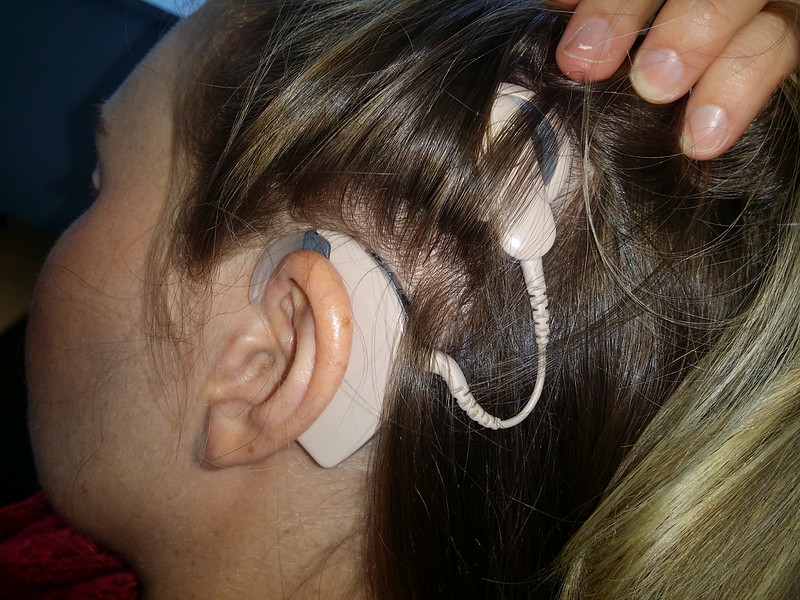Cochlear Implants : How it works, Lifespan, Hearing Aid VS. Cochlear implant, Is it Worth doing?

Many individuals with hearing issue often consider cochlear implants as an alternative to hearing aids.
Consequently, numerous people frequently inquire about questions such as
'How long does a cochlear implant last?' 'How painful is cochlear implant surgery?' 'Can a deaf person hear after a cochlear implant?' and 'Is cochlear implant surgery considered major?'
Today, this text will serve as answers to the aforementioned questions.
Approximately 324,000 people have been implanted with cochlear implants worldwide. More than 58,000 adults and over 38,000 children in the United States use cochlear implants to help them hear. But what do cochlear implants sound like and is it really worth doing? Let's dig in to it.
How Normal Hearing Works
Sound exists in the world as vibrations that travel through air (and sometimes other mediums) as waves. How we perceive a sound depends on the length, height, and speed of that sound wave. The frequency of a sound consists of the length (wavelength) and speed of a sound wave; we interpret this as the pitch of a sound. The height, or amplitude of the wavelength, determines the volume of a sound.
Sound waves are captured by the outer ear and funneled into the ear canal where they cause the eardrum to vibrate. This vibration causes the three small bones in our middle ear, the malleus, incus, and stapes, to move against the cochlea. The cochlea is a fluid filled chamber filled with hair cells, and the movement of the fluid causes the hair cells to be stimulated and gently moved. As the hair cells move, they release electrical signals that are transmitted to the auditory nerve and to the brain, where they are processed as sound. This entire process is what we know as hearing.
Cochlear Implant Technology: How It Works
In people with severe hearing loss, the bones of the ear, the cochlea, or the hair cells may be non-functioning. In these cases, hearing aids will not work because they simply amplify sound. If the parts of the ear that receive and transmit sounds to the brain are not working, then no matter how amplified the sound is the brain will not receive the information . It's like a situation where a truck carrying goods needs to cross a bridge, but there's no bridge, making it impossible to transport the items. Therefore, instead of the missing bridge, creating a new path to facilitate the transfer of goods can be likened to a cochlear implant.
A cochlear implant, however, bypasses the outer and middle ear completely to send information directly to the auditory nerve. Here’s how it works:
- A microphone, worn on the back of the ear, captures sounds.
- A small computer processor worn behind the ear processes and arranges the sounds picked up by the microphone.
- The sound frequencies are sent to a transmitter that is attached to the outside of the head, behind the ear, with a magnet. These sound frequencies are converted into electric impulses.
- A surgically implanted receiver, just below the skin under the transmitter, receives the impulses transmitted from the transmitter.
- An electrode array that is implanted directly onto the cochlea collects the impulses from the receiver.
- The electrodes stimulate the nerve fibers and the auditory nerve, sending the signals to the brain for processing as sound.
Cochlear implants are very different from hearing aids. Hearing aids are essentially speakers that boost certain frequencies, frequencies in which a person with hearing loss has trouble hearing because specific hair cells are no longer functioning as well as they did. Cochlear implants do not restore hearing – they give a different representation of sound and therefore even require training and adjustment to get used to.
The other major difference is that hearing aids are removable appliances, whereas the receiver and electrode array of a cochlear implant are surgically implanted.
Therefore, the answer to the question "How long does a cochlear implant last?" is, "Unless issues arise, a cochlear implant is designed to last permanently.
While hearing aids typically have a lifespan of around 5 years, the internal components of a cochlear implant, such as the electrode array and receiver-stimulator, are intended to be long-lasting and can often remain in place for a lifetime. However, external components, like the speech processor and microphone, may need upgrades or replacements over time due to technological advancements.
However, what's more crucial than the lifespan of a cochlear implant is that the technology associated with cochlear implants continues to advance. Consequently, rather than undergoing surgery again due to issues with the implanted device, many individuals opt for re-surgery to receive a cochlear implant with enhanced technology.
How Does Hearing Sound with a Cochlear Implant? : Hearing Aid VS. Cochlear implant
The way that hearing aids and cochlear implants sound is different. Hearing aids sound very similar to normal hearing because they take incoming sounds and simply amplify certain frequencies. The sound then takes the normal pathway to the eardrum, middle ear, cochlea, and hair cells. Because cochlear implants bypass the normal pathway, the sound information received by the brain is different and is processed differently than normal sound.
Only someone that has a cochlear implant knows exactly what it sounds like, and what it sounds like is different for each person. There are many simulations online of what cochlear implants sound like (try googling “cochlear implant simulation”), but many people who have normal hearing in one ear but use a cochlear implant in the other say that none of the simulations that they’ve heard come close to what they experience as sound with their implants. People that have just received their implants commonly describe what they’re hearing as cartoon-like, robotic or beeping voices, echoey, buzzy, ringing sounds, or sounding like the late Stephen Hawking.
Is a cochlear implant truly worthwhile?
: Is cochlear implant surgery considered a major procedure?
Can individuals who are deaf regain their ability to hear after undergoing cochlear implant surgery?
How painful is the cochlear implant surgical process?
According to the 2021 survey results from NIDCD , approximately 118,100 cochlear implant devices have been implanted in adults and 65,000 in children in the United States. This accounts for a relatively small proportion compared to the number of people with hearing impairments.
This is likely due to the fact that, unlike hearing aids, cochlear implants involve a major surgical procedure. Cochlear implant surgery is considered a significant surgical intervention, including an incision behind the ear, drilling into the bone to access the cochlea, and placement of internal components.
Many people are curious about the effectiveness of cochlear implants, often asking, "Can a deaf person hear after a cochlear implant?"
However, it's important to note that undergoing cochlear implant surgery does not guarantee complete restoration of hearing in individuals with profound hearing loss. Cochlear implants work by creating an alternative path to deliver sound signals to the brain, bypassing damaged or non-functioning hair cells in the cochlea. The degree of improvement can vary among individuals.
Additionally, when considering cochlear implantation at a young age, there are numerous reports suggesting better outcomes, especially in conjunction with the language development process. Therefore, if cochlear implantation is recommended for a child, a prompt decision should be made to facilitate the most beneficial intervention.
While cochlear implant surgery is a significant procedure, with the surgery conducted in proximity to the brain, many individuals report that the level of pain is not as severe as anticipated. The procedure is typically performed under general anesthesia, ensuring patients do not feel pain during the surgery itself. Post-surgery, there may be some discomfort, swelling, or pain at the incision site, but this can be effectively managed with prescribed pain medications. Discussing pain management with the medical team both before and after the surgery is crucial to ensuring the patient's comfort.
Understanding Cochlear Implant Sounds Takes Training

When people are first fitted with cochlear implants, their brain has to adapt before being able to process the electrical impulses coming from the implant that it’s never experienced before into information that makes sense. This process takes time, practice, and rehabilitation with a hearing health professional. Most cochlear implant users report that the strange sounds they first heard when they received their implant go away as they use their device more and more and it is reprogrammed as they adapt.
Some people report experiencing an epiphany when their brain starts to process the new sound information more normally and they in turn begin to “hear” sounds like they normally did before their hearing loss. This process usually takes months to years, the outcome of which is determined by the amount of time and energy the person puts into learning to use the implant.
The sound quality and the ability of a cochlear implant user to hear and understand everyday sounds, understand speech, or enjoy music varies between recipients. However, most cochlear implant users can hear much better than they did before and have a better quality of life due to the implant.
The information in this guide has been written using the following reliable sources:
https://www.asha.org, https://www.umms.org, https://www.nidcd.nih.gov, https://www.enthearingcenter.com, https://blog.medel.com, https://www.sciencefriday.com, https://www.nidcd.nih.gov
The post What Do Cochlear Implants Sound Like? appeared first on Olive Union.






 Everyone has had or dealt with dry skin at some point in their lives. It can be caused by the environment, allergens, lifestyle decisions, and many other varying factors and can be quite a nuisance to deal with, even painful. Similarly, the same can be said for dry ears. Similar to how skin produces oil […]
Everyone has had or dealt with dry skin at some point in their lives. It can be caused by the environment, allergens, lifestyle decisions, and many other varying factors and can be quite a nuisance to deal with, even painful. Similarly, the same can be said for dry ears. Similar to how skin produces oil […] Web designer is a particularly accessible job for the hearing impaired as well, because most of the communication involved tends to be digital. Salary...
Web designer is a particularly accessible job for the hearing impaired as well, because most of the communication involved tends to be digital. Salary...
